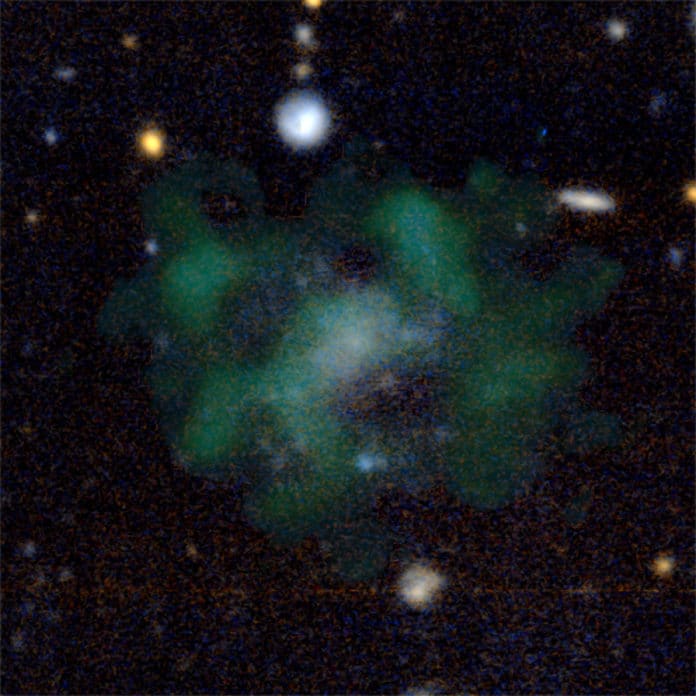Dark matter provides vital “scaffolding” for the universe. It acts as the glue that holds galaxies together, believes scientists.
Recently, a team of astronomers discovered evidence for dark-matter free galaxies. The team, led by scientists from the Netherlands, found no trace of dark matter in the galaxy AGC 114905.
AGC 114905 is the so-called super-dwarf galaxy, located about 250 million light-years away. It is roughly the size of our Milky Way but contains a thousand times fewer stars.
The prevailing idea is that all galaxies, especially super-dwarf galaxies, can exist only if they are held together by dark matter. Despite taking detailed measurements for more than forty hours using advanced telescopes, astronomers found no trace of dark matter in the galaxy AGC 114905.
Astronomers found six dark-matter free galaxies. They were asked to take another good measure in the hope of seeing dark matter around the galaxy. Pavel Mancera Piña (University of Groningen and ASTRON, the Netherlands) and his colleagues used the Very Large Array (VLA) telescope for observations. After 40 hours of additional sharp measurements, the evidence for a dark matter-free galaxy only became stronger.
The team collected data on the rotation of gas in AGC 114905 between July and October 2020 using the VLA telescope. Later, they made a graph showing the distance of the gas from the center of the galaxy on the x-axis and the rotation speed of the gas on the y-axis.
The graph shows that the motions of the gas in AGC 114905 can be completely explained by just normal matter.
Pavel Mancera Piña said, “This is, of course, what we thought and hoped for because it confirms our previous measurements. But now, the problem remains that the theory predicts that there must be dark matter in AGC 114905, but our observations say there isn’t. The difference between theory and observation is only getting bigger.”
Why do the galaxies lack dark matter?
According to scientists, AGC 114905 could have been stripped of dark matter by large nearby galaxies.
Mancera Piña said, “But there are none. And in the most reputed galaxy formation framework, the so-called cold dark matter model, we would have to introduce extreme parameter values far beyond the usual range. Also, with modified Newtonian dynamics, an alternative theory to cold dark matter, we cannot reproduce the motions of the gas within the galaxy.”
Scientists believe that the angle at which they observe the galaxy could be one more assumption that could change their conclusions.
Co-author Tom Oosterloo (ASTRON) said, “But that angle has to deviate very much from our estimate before there is room for dark matter again.”
The team is examining another ultra-diffuse dwarf galaxy in detail. If they don’t find a trace of dark matter there, the case of dark matter-free galaxies will become stronger.
Journal Reference:
- Pavel E. Mancera Piña, Filippo Fraternali, Tom Oosterloo, Elizabeth A.K. Adams, Kyle A. Oman & Lukas Leisman. No need for dark matter: resolved kinematics of the ultra-diffuse galaxy AGC 114905. arXiv:2112.00017
